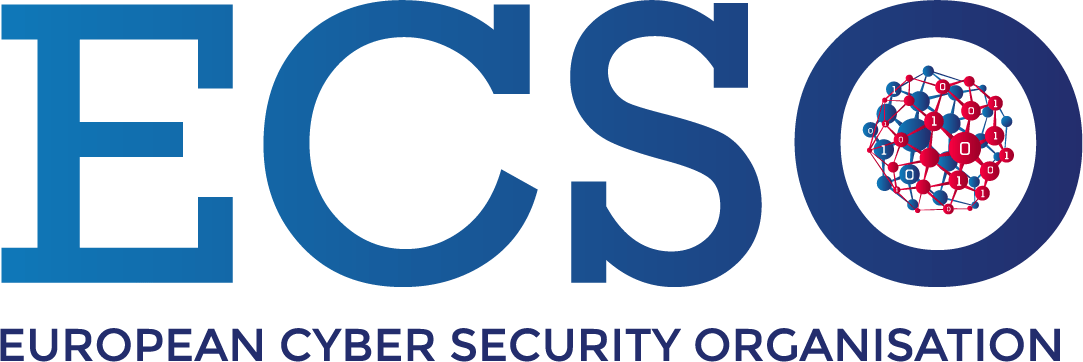Blog Post
Cybersecurity Risk Register: A Key Tool for Modern Risk Management
March 26, 2025
TL;DR
- Cybersecurity risk registers are highly valuable tools that are a crucial part of any cyber GRC program for systematically documenting and managing potential cyber threats, helping organizations to work proactively towards resilience.
- These registers include critical information such as in-depth risk descriptions, likelihood assessments, potential impacts, longer-term outcomes, and ideal mitigation strategies.
- Risk owners play a pivotal role in managing assigned risks, implementing strategies, and ensuring continuous monitoring to maximize reduction efforts.
- Traditional risk registers manually created in spreadsheets are difficult to scale and are prone to version control issues. They also lack the ability to reflect the interconnected nature of cyber risks.
- Cyber risk quantification (CRQ) solutions address several of these limitations, especially in scenario building, offering measurable data-driven insights into risk likelihood, financial loss, and operational disruptions.
- CRQ likewise enables clearer communication of cyber risk by translating them into business terms, bridging the gap between cybersecurity teams and high-level executives and ensuring broader business alignment.
- By adopting a cyber risk register that incorporates quantified insights, security and risk management (SRM) leaders can proactively prioritize initiatives, allocate resources more effectively, and build a stronger cyber GRC framework that results in resilience.
Adopting a Risk Register for a Cybersecurity GRC Program
Modern organizations have to navigate a complex web of risks, some of which are easily controllable and others that pose a significant challenge to stability, reputation, and growth. But regardless of where specific risks fall on the spectrum, it’s critical that they be documented and accounted for, allowing risk managers and senior executives to not only understand the obstacles the business may have to face in the upcoming but also how to tackle them and, when necessary, meet compliance standards.
Having this thorough understanding of the risks their company may experience is the basis of any comprehensive cyber governance, risk management, and compliance (GRC) program, providing high-level business leaders with the insights necessary to prioritize resources more effectively and mitigate those threats that have the capacity to wreak the most damage. This transparency likewise fosters a culture of proactive decision-making, ensuring that emerging risks are addressed swiftly and measures are taken to fortify resilience and compliance before the inevitable event occurs.
Obtaining this detailed view of one’s company’s risks and systematically managing them is no simple feat, however, and typically demands that stakeholders harness tools and templates that provide assistance. Among these solutions, risk registers stand out as a critical resource, offering a robust framework for documenting risks, assessing their projected impact on the organization, and recording the subsequent actions taken to remediate them, whether than be through governance, direct risk management, or compliance initiatives. With the structured approach of a risk register, executives can more easily establish strategies that facilitate long-term success.
What Is a Cyber Risk Register?
Of all the types of risk that organizations encounter, none have evolved so rapidly in scope and sophistication as cyber, thereby requiring chief information security officers (CISOs) and other security and risk management (SRM) leaders to adopt cyber risk registers into their cybersecurity GRC frameworks that can help them better track and manage potential threats. Cybersecurity risk registers offer a comprehensive inventory of such cyber threats, along with crucial details about them, such as their likelihood, potential impact, and the measures needed to mitigate them.
Cyber risk registers can be as detailed as the CISO requires, although they will often start with high-level, general risks and progressively drill down into the more granular information as needed. For example, cyber risk managers may begin their cyber risk register by listing all of the specific cyber events their organization is vulnerable to, like ransomware attacks, business interruptions, and data breaches. Once these initial risks are identified and assessed, risk leaders can begin to add additional variables for enhanced visibility and deeper context.
After the identification and assessment processes, CISOs will then typically assign a risk owner, someone who is responsible for overseeing the risk, implementing mitigation strategies, and ensuring ongoing monitoring to track their status and effectiveness over time. This highly meticulous approach to developing a cyber risk management program empowers CISOs to effortlessly track and manage risks while maintaining focus on the organization's security priorities and business objectives.
What Should Be Included In a Risk Register for Cybersecurity?
While every organization's cybersecurity risk register will vary, there are a number of elements that should be included in every one. These components form the bedrock of the register and ensure that risks are accurately documented and effectively assessed to support informed decision-making and proactive mitigation.
- Risk Description: This is a detailed description of the cyber risk that the organization faces and should include contextual information such as what the risk is, how it may arise, and which systems, processes, or data it could impact.
- Likelihood: The likelihood is an assessment of how probable it is that the risk will occur, usually over a given year. CISOs can use expert judgment or harness on-demand CRQ solutions like Kovrr's to gain data-driven insights into these specific risk likelihoods.
- Impact: The impact outlines the consequences should the risk materialize. This element of the cyber risk register should quantify or describe the effects, such as financial loss, outage time, number of data records compromised, or reputational damage.
- Outcome: As opposed to the immediate consequences of a risk, the outcome is the broader, longer-term effects an event may have on the organization and can include missed objectives, legal repercussions, reduced market position, or lasting customer trust issues even after the incident has been contained.
- Priority: The prioritization level is a subjective figure or assessment that depends on the organization's broader business objectives. Risk mitigation efforts should be prioritized according to the risk's forecasted likelihood, impact, and outcome while simultaneously aligning with risk appetite and tolerance levels.
- Strategy and Cost: Generally, CISOs can decide to avoid, accept, mitigate, or transfer the risk. Once the decision is made, these SRM leaders are then able to determine the cost of their strategy. Understanding these costs is crucial for later budget justification and allocation.
- Risk Owner and Responsibilities: A risk owner should be assigned and given explicit tasks to manage said risk. These responsibilities can include more thorough assessments, implementing the chosen mitigation strategies, monitoring progress, and keeping documentation. Assigning a risk owner creates accountability and drives timely action.
Other information that, depending on the organization, can be incorporated in the cyber risk register include:
- Which IT asset or assets the risk is directly related to
- Specific implemented controls and monitoring systems
- Risk dependencies due to the interconnected nature of cyber
- Organizational reporting hierarchy
- New and emerging risks
Often, the more details one can provide regarding the risk, the more equipped the organization will be to handle it. However, it’s important not to overwhelm oneself with information and stick to only what is relevant for governance, risk management, and compliance.
High-Level Cyber Risk Register Template

Regularly Review and Update the Cyber Risk Register
Cyber threats are evolving quickly, with new vulnerabilities and malicious tactics to exploit them emerging daily. This volatility demands that SRM leaders continuously review their cyber risk registers, regularly make changes, and add new risks.
Frequent updates also allow organizations to recalibrate risk prioritization as business objectives and regulatory landscapes shift. For instance, risks that once seemed a low priority may escalate due to external changes, while others may diminish in relevance. Additionally, period reviews create an opportunity to evaluate the effectiveness of the implemented mitigation strategy and adjust it accordingly. Only by embedding constant risk register updates into their workflows will these tools remain relevant.
Traditional Cyber Risk Register Challenges
Traditional cyber risk registers are typically created in spreadsheets, making it difficult for CISOs to scale them as the organization grows and risks become more complex. Managing a large volume of risks becomes unwieldy, leading to overlooked and outdated entries. Moreover, spreadsheets lack the ability to reflect the interconnected nature of cyber risks, creating a significant blind spot in risk assessments.
Version control issues can also arise when multiple stakeholders update the cybersecurity risk register simultaneously, compromising data integrity and viability. The manual nature of tracking risks makes it increasingly difficult to maintain consistency and reporting formats, risk impact analyses, and prioritization choices. All of these shortcomings of the traditional spreadsheet approach prevent organizations from gaining a deeper, accurate view of their cybersecurity posture.
Addressing Traditional Challenges With Cyber Risk Quantification
On-demand cyber risk quantification (CRQ) solutions help to address the limitations of traditional cybersecurity risk registers by providing measurable, accurate, data-driven insights into the potential impact of highly detailed cyber risk scenarios, often illuminating risks an organization wasn’t previously aware of. CRQ models incorporate real-time threat intelligence to calculate not only the likelihood of experiencing certain cyber risks but also the potential financial impact, outage time, and data record loss that, on average, will ensue should the risk occur.
With this objectively quantified clarity, CISOs and cyber risk managers can more effectively prioritize risks based on their tangible impact and ensure resources are allocated where they are needed most. CRQ forecasts enable the development of targeted mitigation strategies that focus on risks with the highest financial exposure or operational disruption. Moreover, CRQ insights facilitate scenario planning, allowing organizations to simulate specific risk events and evaluate their preparedness.
Additionally, by presenting risks in concrete, data-driven terms, CRQ empowers CISOs and SRM leaders to use their cyber risk registers to communicate more clearly with non-technical executives and stakeholders. The consequent alignment bridges the gap that generally exists between cyber teams and business executives, ensuring that risk mitigation decisions are influenced both by security needs and high-level organizational objectives.
Quantified Cyber Risk Registers: Driving Clarity and Action
CISOs are becoming increasingly overwhelmed by the vast amount of responsibilities they have, necessitating tools like cyber risk registers that can help them prioritize initiatives and can be integrated into their cyber GRC approaches. With cyber risk registers that incorporate quantified information, security and risk leaders become equipped with the insights necessary for this prioritization, accessing metrics such as a risk's likelihood, potential financial damage, and operational consequences. After leveraging these details, deciding which mitigation initiatives to pursue first becomes a streamlined process.
On top of providing this comprehensive view, cybersecurity risk registers also offer CISOs a unified space in which to document mitigation strategies, monitor progress, and maintain the accountability of a respective project by assigning risk owners. Moreover, risk registers driven by cyber risk quantification models help to translate complex technical terms into broader business goals, facilitating clearer discussions about adequate resources and ensuring that cybersecurity programs are aligned with overall business objectives, the ultimate goal of any robust cybersecurity GRC initiative.
This alignment not only enhances the efficiency of risk management efforts but also builds confidence among stakeholders by demonstrating a well-structured, data-driven approach to cybersecurity. As cyber threats continue to amass, such systematic tools are becoming indispensable for ensuring resilience.
Sign up today for Kovrr's CRQ-powered cyber risk register and gain the insights necessary to manage loss scenarios more effectively, track mitigation efforts with ease, and optimize resource allocation.






.jpeg)
.jpg)

.jpg)
